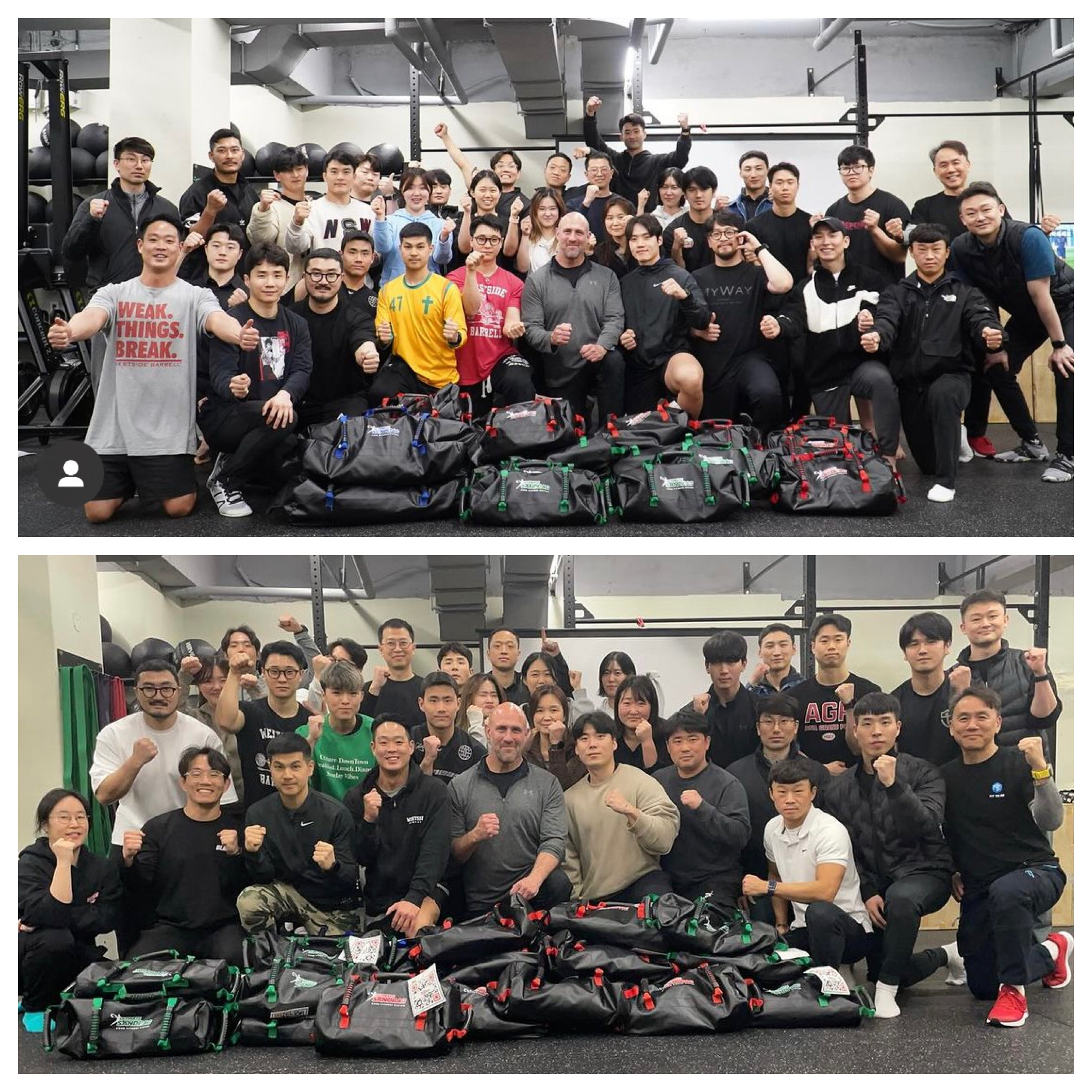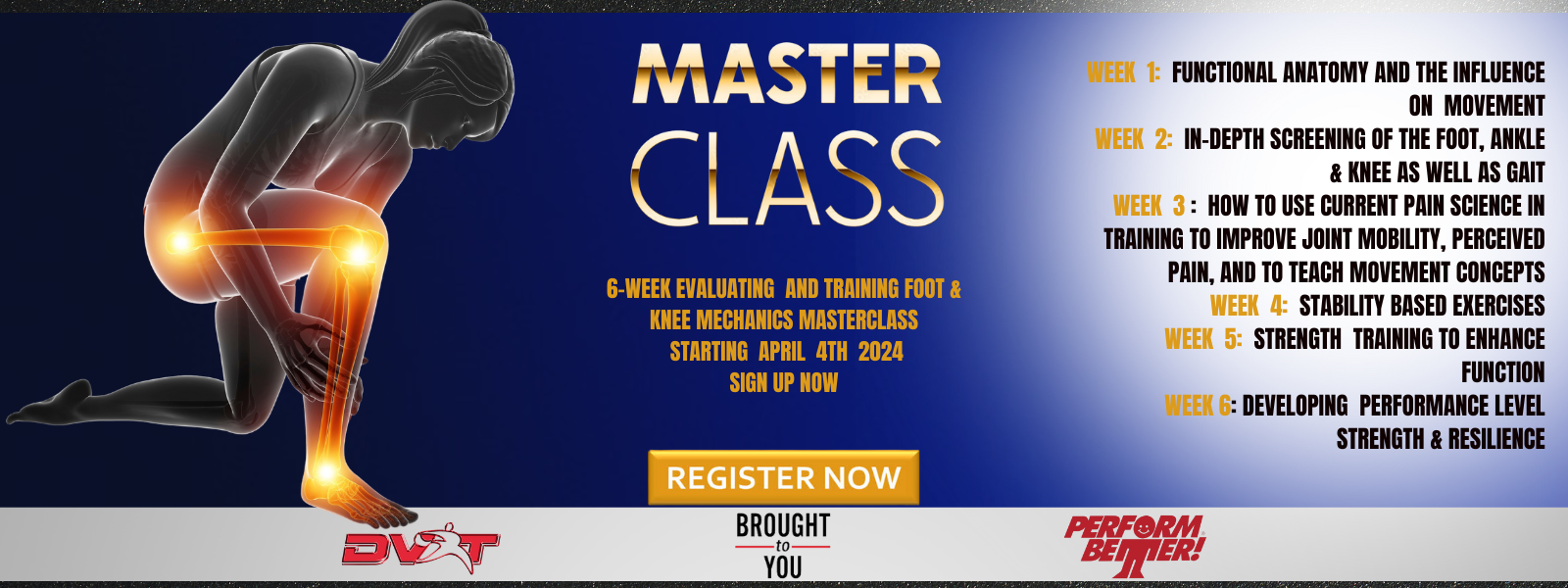3 Reasons NOT To Heel Wedge Your Squats
2024-03-31
I just came back from a great 4 days of teaching DVRT courses in South Korea. It is amazing to think how DVRT is continuing to spread throughout the world and exceeding what I could ever imagine that our training system would become. Each experience though allows me to see how we as people are similar in many ways and different in others.

Interestingly enough, this is the second time I was teaching in Asia just in the last 6 months. Jessica and I taught in Japan last October as well. I bring this up because at both events, we asked if the act of wedging someone’s heels on squats was something that was commonly practices. Funny enough, in both Japan and South Korea they looked at us with confusion when we brought up this idea. They didn’t understand why someone would need to elevate one’s heels when they squatted, it made no sense to them.
While Asia is becoming in some ways, unfortunately more like the West where we sit in a lot of chairs, they do still have a culture that is use to getting up and down from the ground as well as getting in deep squatting positions. This is important because I think people are often using heel wedges as a means to give the illusion that they are squatting well and ignoring important issues that we need to address for both health and fitness goals. That is why I think these are 3 strong arguments AGAINST using wedges with one’s squat. Let’s explore these ideas.
It Is NOT A FULL Range Of Motion Squat
I often hear coaches say that they use heel wedges with squats because then they can achieve a full range of motion in the squatting movement. However, here is the problem, the squat isn’t just what the knee or even what the hip does, it is also important how the ankle functions during the movement. When we squat well, we get great what is known as dorsiflexion of the foot (point your foot to yourself as much as possible and that is dorsiflexion of the foot), this is part of the kinetic chain that goes foot, ankle, knee, and hip.

When we wedge the squat the foot goes the other direction (plantar flexion) and most people don’t come close to moving into dorsiflexion. If they had the ability to do so (which is why most people really wedge is due to lack of this ankle mobility) they wouldn’t need to wedge the squat. In fact, that would get much MORE out of the squat if they have good ankle mobility by squatting and taking advantage of all three joint areas moving together.
So, wedging squats both ignores the need for this ankle mobility and gives the illusion of a full squat until we point out that the ankle is part of the full range motion. I know, most people will ask, “what should I do then?” the answer is rather simple. Squat as deeply as you can until you can’t maintain proper squatting mechanics while also working on hip mobility.
Stop Focusing So Much On Just The Quads
It is funny for me because having been in the industry for over 25 years I can remember when the emphasis for preventing knee issues was building strong hamstrings and glutes. So much of the focus for years was working the quads because people just associated the knee with the quadriceps. However, research showed that a lot of other muscles were JUST as if not MORE important.
The hamstrings have been shown to play an important part in avoiding excessive knee translation during a lot of movements and the gluteals play a big part in avoiding knee issues as well. As this 2007 study explains, “Given biomechanical relationships between the hip and knee, examining the entire lower kinetic chain should occur when evaluating patients with knee pain. Using impairment-based interventions, such as addressing hip strength in addition to knee pain, may enhance intervention effectiveness. Results of this study provide data that suggest that individuals with knee pain had weak hip muscles.” (Hip Strength and Knee Pain in Females)
Some may think that the quadriceps are weak in people with knee pain, but it could also be the pain making the quadriceps appear weak. Don’t get me wrong, strengthening the quadriceps in people typically isn’t a bad thing, but why not do so in an integrated manner when we can train the quads, hamstrings, and hips all at the same time? Most people tend to be more dominant in the quadriceps than the hamstrings and glutes so when we work the quads it would probably be smart not to do so at the expense of the hamstrings and hips which people tend to focus upon when performing wedged squats. Below are some great examples from our friends at Fitness Lying Down.
View this post on Instagram
People Are Misunderstanding The Research
Some will try to point to the fact there is evidence in the literature that elevating the heels during a squat reduces knee pain. Well, that is kinda true. There is research using “decline” single leg squats to reduce patellar tendinopathy, however, what they don’t tell you is the range of motion is rather small and the activity usually indicated pain in subjects. Most in the studies were athletes so their ability to work through pain may be higher than those who are not athletes.

That range of motion doesn’t look very similar to what people do when they wedge their squats so they aren’t being true to the research. Plus, the research was on single leg, not bilateral movements. People often fail to explain too that research also shows that just progressive strength training of the lower body is JUST as effective and doesn’t cause the pain that decline squats often result in when performing them.

These weren’t exceptionally well performed or fancy strength training exercises as you can see. We can do better and use exercises like below in progressive ways. We can reduce the range of motion, work on our ankle and hip mobility, use core stability to aid in better movement and actually teach how to squat well and you won’t need to wedge your squats. Plus, you will get better results in both movement and strength!
Don’t miss the final days to sign-up for our online 6-week Foot & Knee Mechanics Masterclass HERE and you can save 20% all throughout DVRT (except the masterclass) with code “save20” HERE
View this post on Instagram
© 2025 Ultimate Sandbag Training. Site by Jennifer Web Design.







